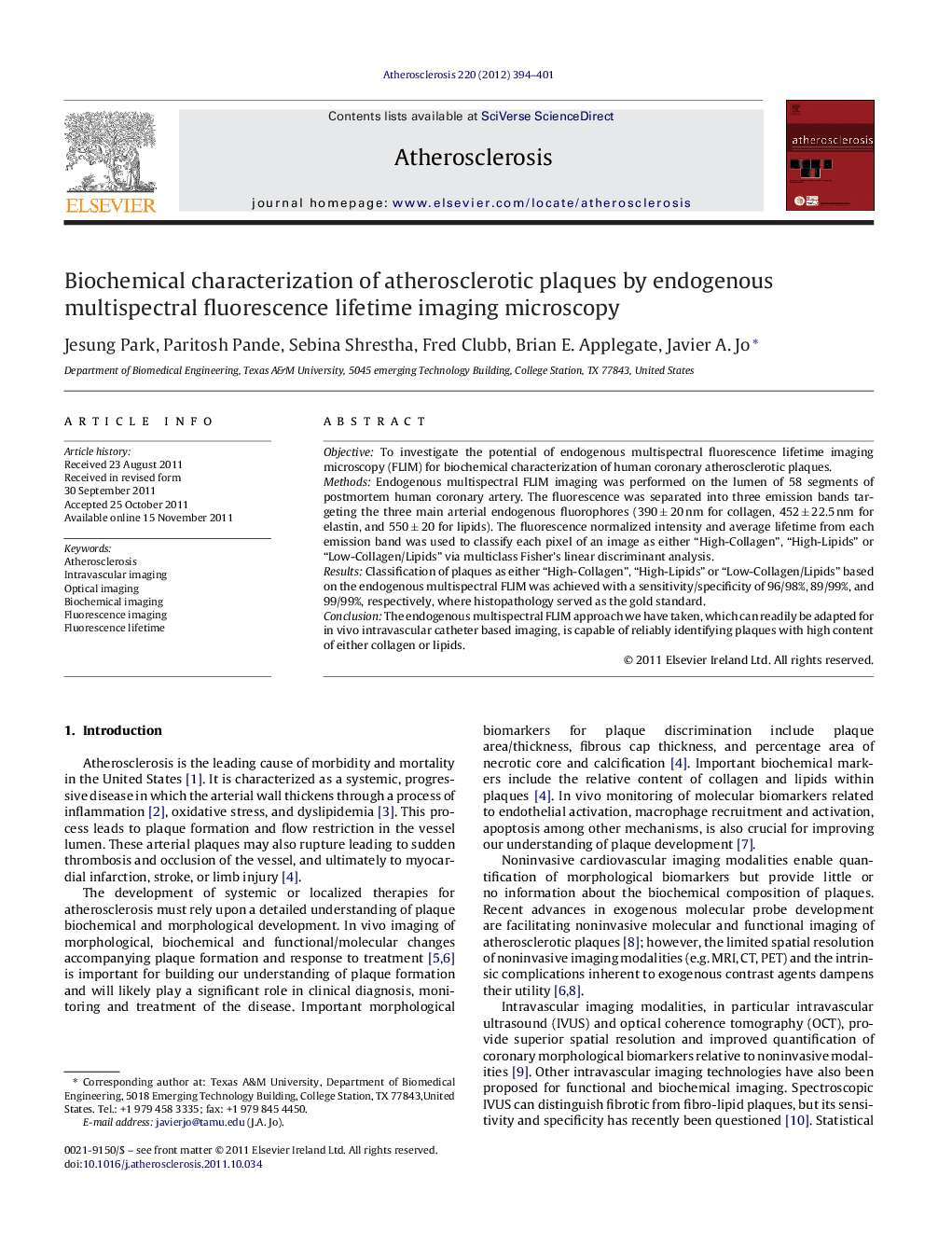| Article ID | Journal | Published Year | Pages | File Type |
|---|---|---|---|---|
| 2892738 | Atherosclerosis | 2012 | 8 Pages |
ObjectiveTo investigate the potential of endogenous multispectral fluorescence lifetime imaging microscopy (FLIM) for biochemical characterization of human coronary atherosclerotic plaques.MethodsEndogenous multispectral FLIM imaging was performed on the lumen of 58 segments of postmortem human coronary artery. The fluorescence was separated into three emission bands targeting the three main arterial endogenous fluorophores (390 ± 20 nm for collagen, 452 ± 22.5 nm for elastin, and 550 ± 20 for lipids). The fluorescence normalized intensity and average lifetime from each emission band was used to classify each pixel of an image as either “High-Collagen”, “High-Lipids” or “Low-Collagen/Lipids” via multiclass Fisher's linear discriminant analysis.ResultsClassification of plaques as either “High-Collagen”, “High-Lipids” or “Low-Collagen/Lipids” based on the endogenous multispectral FLIM was achieved with a sensitivity/specificity of 96/98%, 89/99%, and 99/99%, respectively, where histopathology served as the gold standard.ConclusionThe endogenous multispectral FLIM approach we have taken, which can readily be adapted for in vivo intravascular catheter based imaging, is capable of reliably identifying plaques with high content of either collagen or lipids.
